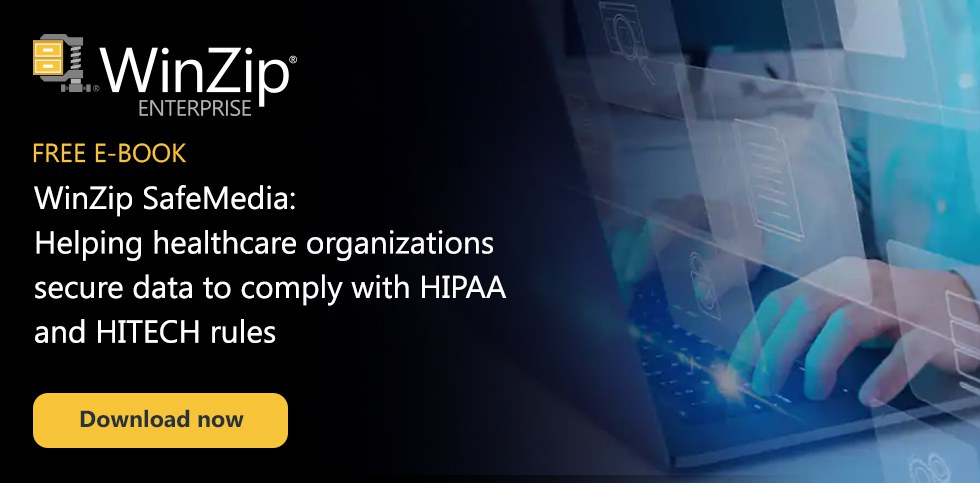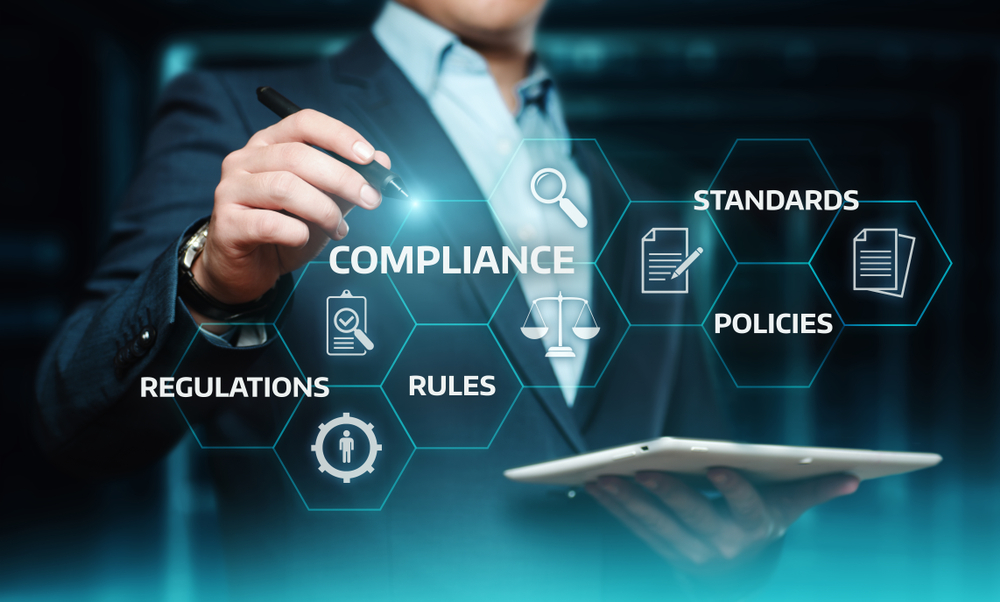A data loss prevention (DLP) policy is a set of rules and guidelines organizations created to help protect sensitive data. It is designed to detect, monitor, and prevent the unauthorized use, access, or disclosure of sensitive data such as:
- Personal information
- Intellectual property
- Financial records
- Medical records
Why do financial institutions need a data loss prevention policy
Specific types of organizations, like banks and financial institutions, handle more confidential customer data than others. For this reason, these organizations must follow a stringent data loss prevention policy to prevent any information theft or data breaches. Data loss prevention (DLP) policies help ensure that customers’ sensitive data is kept safe and secure at all times.
These policies may include elements like:
- Limiting access to specific internal systems or documents.
- Encrypting emails with sensitive content.
- Implementing user authentication systems.
- Developing protocols for monitoring network traffic.
- Running regular scans for any potential threats.
Without such policies, there is a risk that personal details such as names, addresses, account numbers, banking activities, and more can be exposed to criminals or other malicious actors. As a result, not only do financial organizations’ reputations get tarnished when a data breach occurs, but they can get in trouble with the law.
For example, the Gramm-Leach-Bliley Act (GLBA)’s Safeguards Rule requires financial institutions to use a risk-based approach when creating, modifying, and monitoring a security program to protect consumer data. If organizations don’t adhere to these policies, they can expect to face four major repercussions for non-compliance with data privacy laws:
- Inadequate cybersecurity
- Expensive fines
- High individual penalties
- Damaged reputation
For every GLBA violation, financial institutions can expect to pay up to $100,000.
Data loss prevention policy best practices
Data security best practices help to ensure that sensitive information remains secure and prevents unauthorized access.
Credit card numbers, personal information, medical records, and intellectual property are just some types of data that should be protected from unauthorized individuals or organizations. Therefore, it’s crucial to implement DLP security measures and best practices to prevent malicious attackers from accessing sensitive data without permission.
Some essential data security best practices include:
- Developing secure networks.
- Embracing encryption technology.
- Regularly backing up data.
- Creating detailed user access policies.
- Educating employees on cyber security best practices.
- Implementing antivirus and anti-malware software.
The 3 types of data loss prevention strategies
Data loss prevention (DLP) is an important part of data security in any organization. There are three types of data loss prevention strategies commonly used by organizations today.
1. Network data loss prevention
Often referred to as traditional or legacy DLP, network DLP is designed to monitor and protect data transmission within an organization’s internal network. It scans both inbound and outbound traffic for suspicious or malicious actors, such as confidential data being sent outside the organization.
This type of DLP is typically used on-site and managed by IT personnel within the organization.
2. Endpoint data loss prevention
Also known as device control, endpoint DLP is designed to protect endpoint devices such as laptops, desktops, or other mobile devices used to access corporate data and networks. It can restrict user activities on an individual device level through policy enforcement, such as file blocking/sharing, application control, and content inspection.
For example, an endpoint device policy could be set up to block USB drives from connecting to a laptop unless it meets certain criteria set by IT admins first, such as having specific encryption measures installed.
3. Cloud data loss prevention
Cloud DLP helps organizations detect data risk from cloud applications, such as Dropbox or Google Drive, where users may store sensitive information without proper authorization or encryption measures in place.
Cloud DLP solutions can detect security policy violations by analyzing data shared across different cloud apps to prevent unauthorized access before they cause any real damage.

Common inclusions in data loss prevention policies
The three main reasons that organizations establish data loss prevention policies are:
- Compliance. Governments have implemented various regulations for organizations to collect and safeguard personal identifiable information or PII. As a part of their data compliance, organizations must develop and enforce DLP policies.
- Intellectual property. Trade secrets and proprietary information need to be protected from unauthorized access. This helps keep such information secure, preventing any potential abuse or misuse.
- Data visibility. Organizations often benefit from tracking how various users access and interact with data, providing them with essential insights.
Now that we understand why organizations establish DLP policies, we must understand the common inclusions. A typical data loss prevention policy contains three different elements:
Location
Location defines where the policy will be enforced.
For example, a company may set up a DLP policy that detects information protected by The Health Insurance Portability and Accountability Act (HIPAA), a federal law that requires organizations to protect sensitive patient health information. The location would be wherever that patient’s health information is stored.
Conditions
The conditions are the parameters to which the policy is applied.
For example, a DLP policy may state conditions such as:
- Old data should be deleted to maintain compliance.
- Data is being used differently than agreed upon by the user.
- Personal data is stored in places that are not protected.
Action
If a specific situation meets any of the conditions specified in the DLP policy, then action is taken to prevent it.
Actions correspond directly to the conditions. For example, data may be deleted if it’s found to violate HIPAA, or personal data may be blocked if it’s being stored in an unsafe environment.
7 steps to creating a data loss prevention policy
Numerous fundamental moving parts make up a successful data loss prevention policy. These are the generalized guidelines that you can follow to create a DLP policy at your organization.
- Prioritize which data is to be protected. All data is different and requires unique care. Therefore, the first step of establishing a DLP policy program is to determine the most sensitive data and begin protecting that first.
- Establish a framework. Develop a detailed policy outlining access rights and acceptable use to ensure all employees understand their responsibility for protecting data. This includes rules on secure storage, encryption, email regulations, etc.
- Assess risks. Consider potential threats such as hackers and internal employee mistakes in order to know what areas need additional security measures in place. Also, develop processes to minimize potential damage if a breach occurs.
- Set up technical controls. Implementing strong technical security measures is essential for ensuring the success of keeping your data confidential. This includes antivirus software, firewalls, two-factor authentication, user access controls, etc.
- Monitor activity. Regularly monitor activity and user behaviors so that suspicious activities can be flagged immediately and addressed, if necessary, before any problems or damage occurs.
- Train your staff. Ensure all employees are well-versed in the standards and guidelines within your DLP policy. In addition, staff must understand how they should handle secure information so as to not expose it due to negligence or lack of knowledge about proper procedures.
- Roll out your policy. Watch your DLP program come to life. Make sure to continuously monitor and adjust where necessary.
Why you should use WinZip Enterprise to protect your organization from data loss
WinZip® Enterprise is a compression and encryption software that is ideal for helping with data loss prevention. It utilizes robust 256-bit AES encryption technology to protect private files from unauthorized access in case of data breaches. This ensures that only those with the correct authorization can open these files.
Furthermore, WinZip Enterprise’s auto-backup feature allows users to set up a scheduled backup plan to automatically back up essential data at regular intervals to protect it even when hardware fails, or user error occurs. With all these features combined, this software can help you keep your critical information safe and secure while minimizing the risk of data loss due to hardware failures or human error.
Discover how WinZip Enterprise can help your organization maintain proper data loss security and avoid negative consequences.





